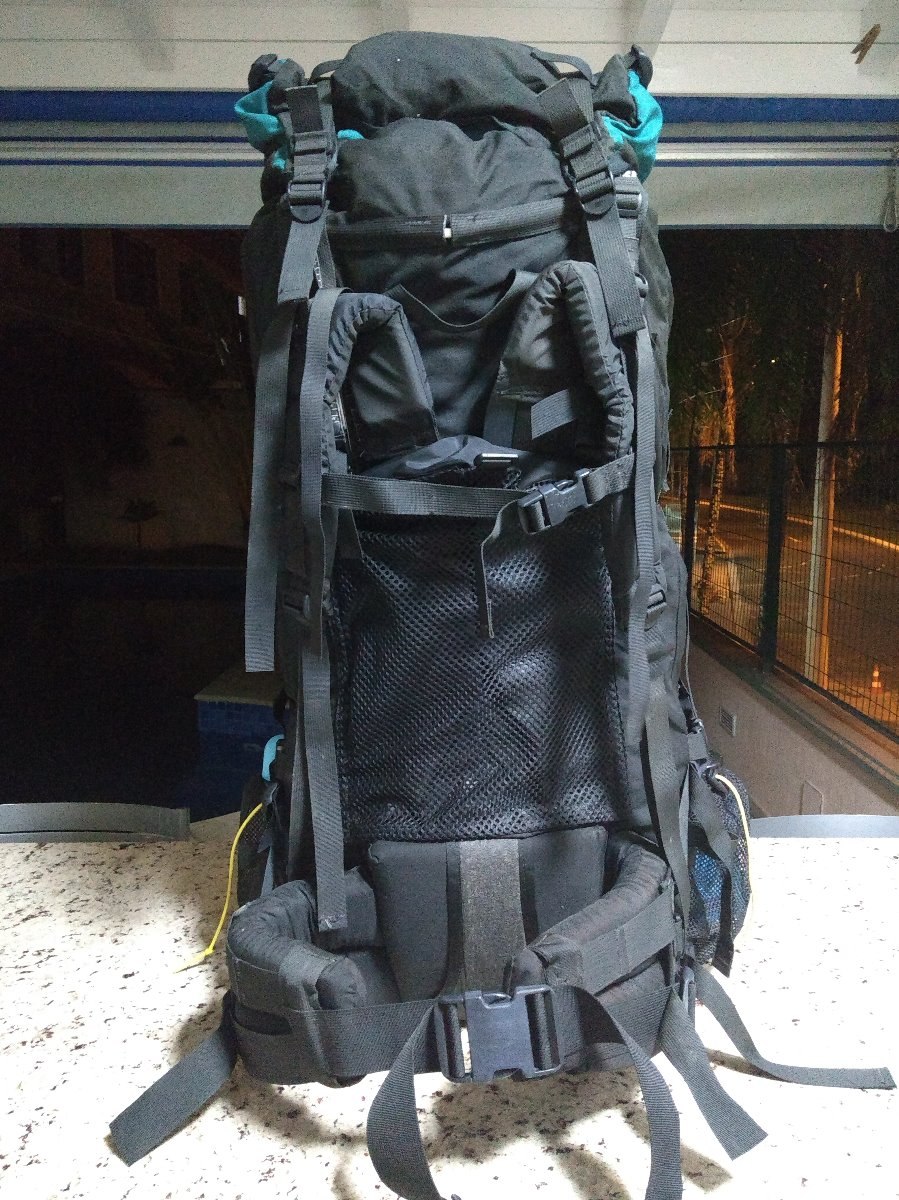And I bet I'll regret having forgotten that in 3...2...1...
![Shocked [shocked] [shocked]](/xen/styles/default/xenforo/smilies.vb/007.gif) The gear he's talking about
The gear he's talking about bears no resemblance to the Crestone III's we have.
When used as designed, our packs put the vast majority of the load on the hips.
In theory, the equatorial partition on the inside of the hip strap padding
(visible in the starboard strap) is intended to cradle the hips.
I wouldn't swear it's as dramatic as the puffery claims. But it's not nothing.
Until/unless I actually cinch the shoulder straps, the spine has
no static load.
I can initially put a couple of fingers between
the top of my shoulders and the shoulder straps.
So the fitness guru going on and on about spinal load falls flat.
The first pack he was demonstrating with is a
lot smaller.
It doesn't even come above the shoulders.
Does it even have a frame?
The Gray Man does
not wear a Crestone III to get home.
Hell, as a Mountainsmith product it's been criticized as
having so many adjustments flapping that
you look like a shoggoth hiking on the trail.

![Shocked [shocked] [shocked]](/xen/styles/default/xenforo/smilies.vb/007.gif)


